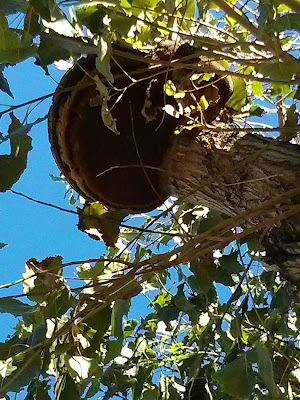THE FUNGI KINGDOM
Wild mushrooms are living things that grow on forest floors, tree trunks and even on top of each other. They need moist, cool temperatures and some light. Here it is one mushroom you can find in one of the trees of our school, amazing!! isn't it?

Which living thing can you see?
Which kingdom does it belong to?
Is this living thing unicellular or multicellular?
THE PROTISTA KINGDOM
Protists include two very different types of organisms: algae and protozoa.
ALGAE
Algae are aquatic living things that can be unicellular or multicellular. They can make their own food (autotrophs). Somo multicellular marine algae can grow to a very large size.
Algae are very nutritious, so they are used as food in many countries. They are also used as fertilizer and to produce cosmetics.
PROTOZOA
Protozoa are unicellular living things that live in aquatic environments. They feed on other organisms. Somo protozoa can cause diseases, like malaria.
THE MONERAN KINGDOM
Monerans are unicellular living things. This kingdom includes bacteria, the most abundant of all living things.
BACTERIA
Bacteria are the smallest and simplest living things, and can only be seen through a microscope.
Most bacteria feed on other organisms, but some bacteria make their own food.
Bacteria can be foound everywhere in the world. They can live in all kinds of evnironments: in water, soil, air or inside other living things.
Some bacteria are helpful, like the ones used to make yoghurt, but other are harmful, like the ones that cuase cholera.
VIRUSES
Viruses are not included in any of the five kingdoms because they are not considered living things. They cannot perform vital functions (nutrition, interaction, reproduction) on their own. A virus is not a cell. It is a microscopic body that can only reproduce inside living things. Viruses may cause illnesses (influenza gripe, measles sarampión, chicken pox varicela etc.)









No comments:
Post a Comment